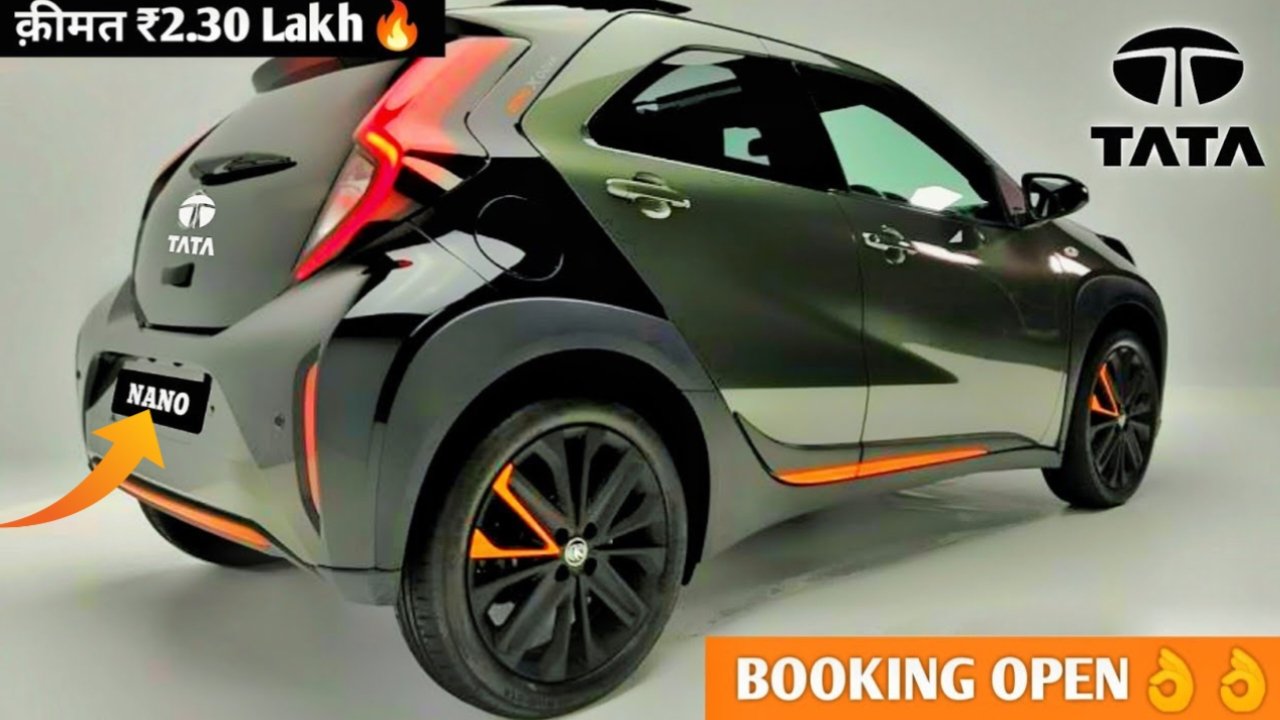2025 model Tata Nano car launched in the budget of Bullet, will get great mileage of 30 Kmpl, know the price
Better Latest Content: Tata Nano Car – A Smart Ride for the City
overview
| Specification | Details |
|---|---|
| Car Name | Tata Nano |
| Manufacturer | Tata Motors |
| Launch Year | 2008 |
| Body Type | Hatchback |
| Engine | 0.6L Petrol Engine |
| Mileage | 21–25 km/l (approx.) |
| Transmission | Manual & AMT (available in later models) |
| Fuel Type | Petrol, CNG (in some variants) |
| Seating Capacity | 4 Persons |
| Price (when launched) | ₹1.00 – ₹2.5 Lakh (ex-showroom) |
Design & Style
The Tata Nano was built with a very clear goal – to make a car affordable for every Indian family. Its design reflects that simplicity. It is a compact hatchback with a tall-boy design, which means it looks small from outside but feels surprisingly roomy inside. The front is rounded and friendly-looking, with big headlights and a clean bumper. The rear of the car is also simple, with vertical tail lamps and a small boot lid.
While it didn’t win any beauty awards, the design was functional. The small wheels and minimal overhangs helped with easy city driving. Over the years, Tata updated the design a little to make it look more attractive, with chrome touches and stylish colors in the GenX Nano.
Engine & Performance
Under the hood, the Nano had a tiny 624cc petrol engine. This two-cylinder engine produced about 38 PS of power and 51 Nm of torque. It may sound very low compared to other cars, but it was enough for city use. The engine was placed at the back of the car, which is uncommon in Indian cars. This helped save space at the front for passengers.

It was not a powerful or fast car, but the Nano was never meant to be a speed machine. It did the basic job of carrying four people at a reasonable pace. Later models even came with an AMT (Automatic Manual Transmission) for easy city driving.
Ride & Handling
Because of its lightweight body and small size, the Nano was very easy to drive in crowded cities. Turning radius was very low, making it ideal for narrow streets and tight parking spots. The suspension was decent for a budget car, although you could feel potholes and bumps.
At high speeds, the Nano could feel a bit shaky, especially on highways or when hit by strong winds. But inside the city, it was smooth, simple, and stress-free. The steering was light, and the brakes were responsive enough for daily use.
Features & Tech
Tata kept the features very basic in the original model. It had a simple dashboard with speedometer in the center. There were no airbags, ABS, or power steering in the first version. But later models came with small improvements like air conditioning, front power windows, Bluetooth-enabled music systems, and even a semi-digital display in top variants.
The GenX Nano tried to add more value with features like remote key, better audio system, openable boot, and improved interiors. Still, it remained a very simple car in terms of technology.
Mileage & Fuel Efficiency
One of the biggest highlights of the Tata Nano was its mileage. In city traffic, it gave around 21-23 km/l, and on highways, it could go up to 25 km/l with light driving. Because of its small engine and lightweight design, the Nano was very fuel-efficient. This made it an excellent option for people who had long daily commutes in cities.
The CNG variant gave even better mileage, making it a good choice for budget-conscious users. Running costs were very low, which was one of the main reasons people considered buying it.
Price & Variants
At the time of launch, the Tata Nano created a huge buzz because of its starting price – just ₹1 Lakh. That was unheard of in the Indian car market. It made headlines around the world as the “cheapest car in the world.”
Over the years, Tata introduced several variants like Nano CX, Nano LX, Nano Twist, and GenX Nano. The top variants added features like automatic gearbox, music system, and better interiors. Prices went up a bit, but the car still remained affordable.
FAQs
Q1. Is Tata Nano still available?
No, Tata Motors officially stopped production of the Nano in 2018 due to low demand and stricter safety rules.
Q2. Was the Tata Nano safe?
The Nano did not perform well in crash tests and lacked many safety features like airbags and ABS. It was designed as a low-cost city car, so safety was not a strong point.
Q3. Can I still buy a used Nano?
Yes, many used car dealers and online platforms still list Tata Nano cars. Prices are very affordable in the used market.
Q4. What is the mileage of the Tata Nano?
Petrol variants gave around 21–25 km/l, while CNG versions offered even better mileage.
Q5. Why was the Nano not successful?
Even though it was cheap and efficient, people saw it as a “poor man’s car,” which affected its image. Also, limited safety and basic features didn’t attract modern buyers.
Final Verdict
The Tata Nano was an idea ahead of its time. It aimed to change the way India moved, offering a car at the price of a bike. While it may not have become the hit it was expected to be, it definitely made a mark in automotive history. For someone looking for a cheap, simple city car, especially in the used car market, the Nano still makes some sense.
It was a bold step by Tata Motors, and even though production has stopped, the Nano will always be remembered as the “people’s car” that tried to make four wheels accessible to every family in India.